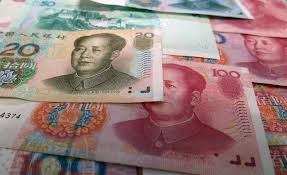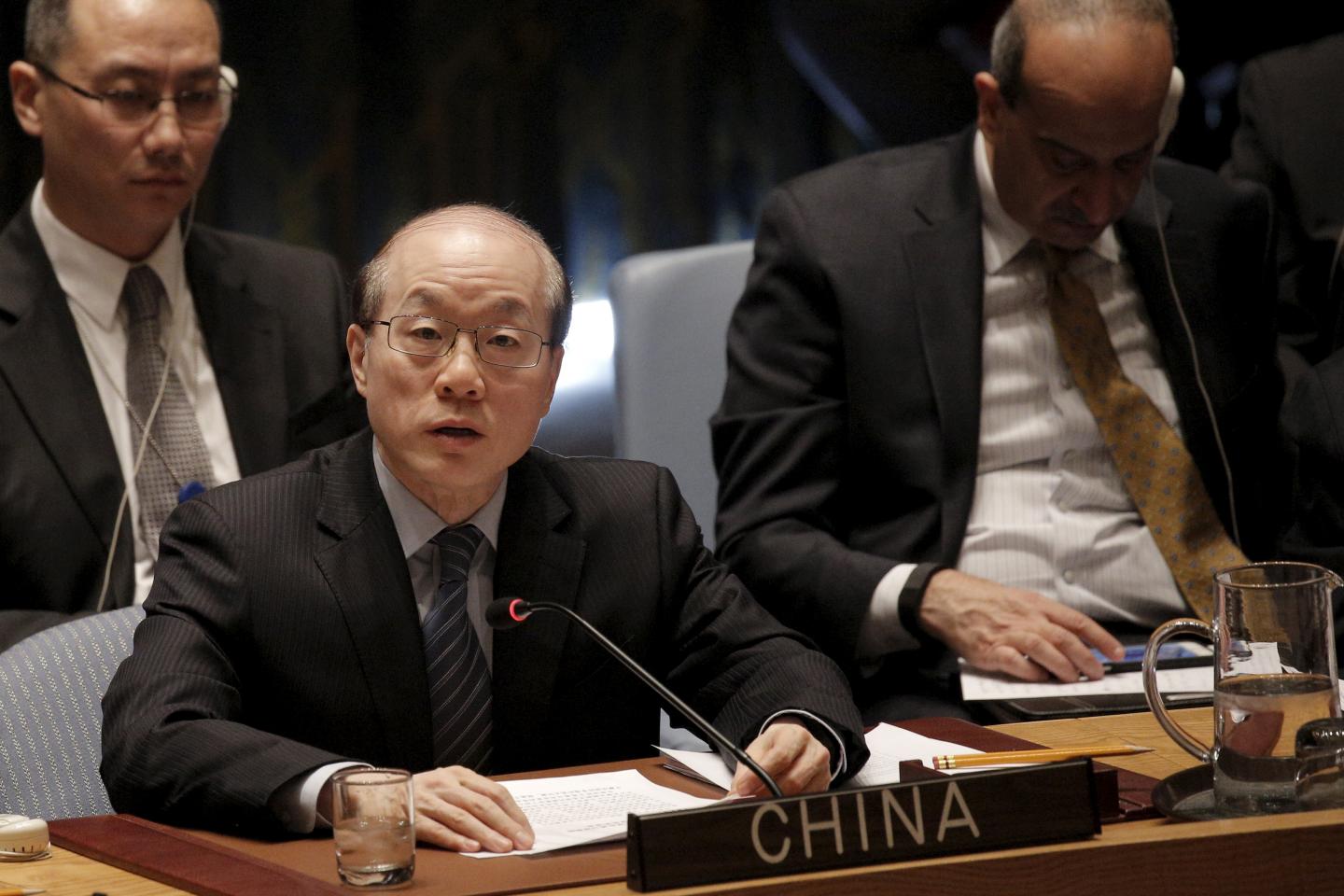
 China positions itself to dominate the industries of the future
China positions itself to dominate the industries of the futureAs Trump's trade investigation on China pours "cold water" on the US-China trade relationship, competition across the industries of the future continues to heat up. China, through both illegal and legal mechanisms, has quickly caught up to the United States in key industries. Labeled as potential "Sputnik Moments" by Daniel Kliman and Harry Krejsa, China has surprised many with its growth in innovative sectors once dominated by the United States.
Building on its reported success this August of testing the world's first quantum satellite communication by sending quantum code from an experimental satellite to the earth, according to China Daily, China's first "commercial" quantum private communication network has been completed in Shandong province. MIT has stated that if the reports are accurate it would be the first time that a working quantum network has been put to real-world use for communications, rather than being confined to experiments, giving China a huge breakthrough in "hack proof" communications.
Even as coal continues to find itself at the center of the American energy policy debate, green technologies have become increasingly urgent and sought after by many countries, including China. China continues to make breakthroughs in high-performance solar cells, while increasing its solar energy capacity at incredible rates. In the first six months of 2017, China added new solar energy generation capacity equal to half of the United States'.
Already a leader in solar energy, China is also looking to be the No. 1 nation in electric vehicle sales. Xin Guobin, the country's industry and information technology vice minister, recently announced China will set a deadline for carmakers to stop selling cars that run exclusively on gasoline or diesel fuel, putting the emphasis on electric cars. However, according to Michael Dunne of Dunne Automotive, any new regulations will probably be "designed to give China a decisive upper hand in the market for electric vehicles." The Chinese government already requires foreign automakers to enter into 50/50 joint ventures with Chinese companies to make and sell cars and trucks in the China market, which is enticing nonetheless in the world's largest car market. Again, complementing these innovative efforts, Gao Feng Advisory, a Beijing-based consulting firm, estimates that China will have spent about $15 billion by 2020 installing charging stations for electric cars.
All under the umbrella of Made in China 2025, China is becoming increasingly competitive in all of these industries. China has progressed at an unprecedented speed in part because of internal factors, but also because its relationship with the United States. Beijing has been acquiring U.S. intellectual property and companies, using coercive trade practices, and conducting cyber espionage to circumvent the traditional costs of research and development.
The Trump administration's recent response has been focused on directly addressing China's efforts through mechanisms like Section 301 and CFIUS. However, many argue that the U.S.' institutions are not currently capable of dealing with the threat China poses to America's long held throne in technology and innovation. Regardless of who dominates these sectors in the future, China US Focus contributor Doug Bandow, hopes that both countries channel their competition away from military confrontation.
 Stabilizing the yuan - A necessity or a well timed move?
Stabilizing the yuan - A necessity or a well timed move?
Over the course of 2017, the yuan has gained in strength versus the dollar. However, earlier this week, China scaled back measures that were helping to prop it up. As of Monday, China had scrapped a reserve requirement rule on trades called "currency forwards," making it cheaper for investors to buy dollars while selling the yuan, and also removing a reserve requirement on yuan deposits for foreign banks. The Trump Administration has accused China on multiple occasions, of keeping the yuan artificially low, compared to the dollar; however, as CNBC notes: "A higher yuan gives Beijing a reason to push back on those claims."
The timing of this is also convenient in giving President Xi an upper hand, when discussing such matters with President Trump, during Trump's visit next month. During this meeting, it can be expected that the two leaders will discuss trade and the actions taken by President Trump during the summer.
As it stood earlier in the week, the yuan had gained 6% against the dollar, and was growing at a trajectory faster than the corresponding downward slope of the dollar, especially over the last week, during which it surged by 2%. On its face, this may look good for the yuan. However, as the yuan strengthens, Chinese goods and services become more expensive, thereby shifting demand downward. As Robert Minikin, a foreign-exchange strategist at Standard Chartered Bank, speculated, "this is quite an important signal here, suggesting the authorities feel that the currency may be strong enough to damage exports." This move can also been seen in the light of wanting to stabilize the market ahead of the highly anticipated 19th Party Congress, slated to take place in mid-October.
Though the the stabilization of the yuan may seem to be a more pragmatic move, others remain skeptical. Mark Williams, the chief Asia economist at Capital Economics, noted that "now that depreciation pressure [of the yuan] has abated, [Chinese] policymakers will want to introduce more uncertainty about the outlook to prevent the re-emergence of a view that the currency will only move one way." It will be important to watch how the People's Bank of China reacts to the decisions taken at the 19th Party Congress, where Chinese officials will lay out the country's economic plan for the next five years, including how to strengthen efforts in the internationalization of the yuan. As Becky Liu, head of China macro strategy for Standard Chartered Bank, stated "These conditions may lead to a further unwinding of temporary measures to curb outflows previously, and pave the way for the next round of financial reforms and renminbi internationalisation."
 China remains an active player at the UN
China remains an active player at the UNIf the UN is an arena for the sport of geopolitics, China was this week's player to watch.
On Monday 11 September, China and Russia backed another round of UN sanctions against the North Korean regime following an alleged hydrogen bomb test. However, some have accused Beijing and Moscow of "watering down" the resolution and continuing to provide a buffer for Kim Jong Un's bellicosity.
According to UN representatives of both countries, Moscow and Beijing continue to agree on the "four nos" — "no regime change, no regime collapse, no stepped-up reunification and no military deployments north of the border separating North and South Korea." This diverges from the more hawkish but nonetheless tempered U.S. position - most comprehensively outlined by Secretary of State Rex Tillerson and Secretary of Defense Jim Mattis – which calls for "strategic accountability" with North Korea.
However, despite Trump's dissatisfied response to the new UN sanctions, many have taken China's willingness to back new UN sanctions to be a signal that the U.S. and China are finding common ground on North Korea. But rifts can still be seen in the two countries' lenses on the rest of the world, and they are nowhere more evident than on 405 East 42nd street.
On Wednesday, China signaled that it was willing to support a draft resolution unveiled by the Netherlands and Canada that seeks to establish an international commission of inquiry into atrocities in Yemen. "We agree with the actions, including the COI, to promote the political solving of the Yemen crisis," a Chinese delegate said at a meeting which was boycotted by the supporters of a rival Saudi-led resolution. Saudi Arabia and the United States have made it clear that they do not support the idea. China has previously supported Saudi-backed forces.
As the world heads into the UN General Assembly just days after Pyongyang launched another missile over Japan, the China-U.S. dynamic within the Security Council will continue to be telling of both rifts and common ground in one of the most important bilateral relationships of the century.
 This Week in Chinese History
This Week in Chinese HistoryOn September 16, 1990, the railroad between the People's Republic of China and Kazakhstan was completed at Dostyk, adding a sizable link to the concept of the Eurasian Land Bridge. A preview of the large ongoing efforts today under the Belt and Road Initiative, this Land Bridge, sometimes called the New Silk Road, is a rail transport route between Pacific seaports in the Russian Far East and China and seaports in Europe. The addition between China and Kazakhstan also connects with other countries in Central Asia and the Middle East including Iran.
Prepared by China-US Focus editorial teams in Hong Kong and New York, this weekly newsletter offers you snap shots of latest trends and developments emerging from China every week, while adding a dose of historical perspective.
- 2017-09-08 Did North Korea just test a hydrogen bomb?
- 2017-09-01 Are Forced Technology Transfers Forcing the U.S. and China to Rethink How They Do Business?
- 2017-08-25 Bannon Out: What now for the China-US relationship?
- 2017-08-18 Trump Launches “Investigation on Whether to Investigate” China’s IP Laws
- 2017-08-11 Threats of "Fire and Fury" on the Korean Peninsula
- 2017-08-04 Trump Administration Plans Trade Actions Against China
- 2017-07-28 Xi to Dominate the 19th CPC Congress
- 2017-07-21 A Steely Comprehensive Economic Dialogue
- 2017-07-14 South China Sea Arbitral Award after One Year
- 2017-07-07 Now is the Trump Honeymoon with China Over?
- 2017-06-30 China Passes New Intelligence Law
- 2017-06-23 The End of China’s Honeymoon with Trump & Diplomatic and Security Dialogue
- 2017-06-16 Climate Change and Reliable Data Dealt Blows
- 2017-06-09 India, Pakistan formally welcomed into the Shanghai Cooperation Organization
- 2017-06-02 Once Partners in Fighting Climate Change, Trump Retreats, China Stays Steady on Paris Climate Accord
- 2017-05-26 Chinese Missile Frigates Confronts USS Dewey as U.S. Resumes FON Operations in South China Sea
- 2017-05-19 The Belt and Road Forum Concludes Leaving Behind Mixed Reactions
- 2017-05-12 Beijing, Washington Reach First Trade Deal Under 100-day Plan
- 2017-05-05 Degree of Autonomy Decaying in Hong Kong?
- 2017-04-28 Aircraft Carriers, Submarines, and Jetliners: Now Made in China
